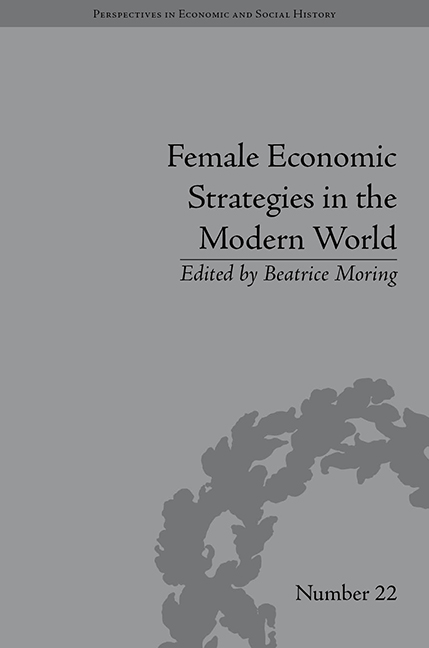Book contents
- Frontmatter
- Contents
- List of Contributors
- List of Tables
- Introduction
- 1 Widows, Family and Poor Relief in England from the Sixteenth to the Twentieth Century
- 2 Survival Strategies of Poor Women in Two Localities in Guipuzcoa (Northern Spain) in the Nineteenth and Twentieth Centuries
- 3 Women, Work and Survival Strategies in Urban Northern Europe before the First World War
- 4 Women, Households and Independence under the Old English Poor Laws
- 5 The Economic Strategies of Widows in Switzerland from the mid-Nineteenth to the mid-Twentieth Century
- 6 Mexico: Women and Poverty (1994–2004): Progresa-Oportunidades Conditional Cash Transfer Programme
- 7 Gender and Migration in the Pyrenees in the Nineteenth Century: Gender-Differentiated Patterns and Destinies
- 8 Women and Property in Eighteenth-Century Austria: Separate Property, Usufruct and Ownership in Different Family Configurations
- Notes
- Index
5 - The Economic Strategies of Widows in Switzerland from the mid-Nineteenth to the mid-Twentieth Century
- Frontmatter
- Contents
- List of Contributors
- List of Tables
- Introduction
- 1 Widows, Family and Poor Relief in England from the Sixteenth to the Twentieth Century
- 2 Survival Strategies of Poor Women in Two Localities in Guipuzcoa (Northern Spain) in the Nineteenth and Twentieth Centuries
- 3 Women, Work and Survival Strategies in Urban Northern Europe before the First World War
- 4 Women, Households and Independence under the Old English Poor Laws
- 5 The Economic Strategies of Widows in Switzerland from the mid-Nineteenth to the mid-Twentieth Century
- 6 Mexico: Women and Poverty (1994–2004): Progresa-Oportunidades Conditional Cash Transfer Programme
- 7 Gender and Migration in the Pyrenees in the Nineteenth Century: Gender-Differentiated Patterns and Destinies
- 8 Women and Property in Eighteenth-Century Austria: Separate Property, Usufruct and Ownership in Different Family Configurations
- Notes
- Index
Summary
Introduction
The change in life expectancy and mortality, combined with the economic changes which took place in society between the middle of the nineteenth and the middle of the twentieth century, also had an impact on widowed females. This is true both for the group of younger widows (under forty-five), which represented 13.2 per cent of all widows living in Switzerland in 1860 and had declined to only 6.4 per cent in 1940, as well as for the group of older ones (sixty-five years old and more), which increased considerably from 35.8 per cent in 1860 to 53.8 in 1941.
The population of widows was in no way homogeneous and the older widows, often frail and lacking adequate financial resources, had different material needs from those of the younger ones, especially those who had lost their husband and had children not yet able to be engaged in gainful employment. Up until World War 1, widows with dependant children figured prominently in the assistance registers of local authorities. This was because when a widow's relatives were unable to assist her in kind or with money her commune was obliged to provide the necessary help. Conflicts were frequent as many local authorities were unwilling to assist the poor adequately or could not meet the rising cost of expenditure resulting from the provision of assistance as their own budgets were very limited, especially in upland and rural regions.
- Type
- Chapter
- Information
- Female Economic Strategies in the Modern World , pp. 89 - 108Publisher: Pickering & ChattoFirst published in: 2014



